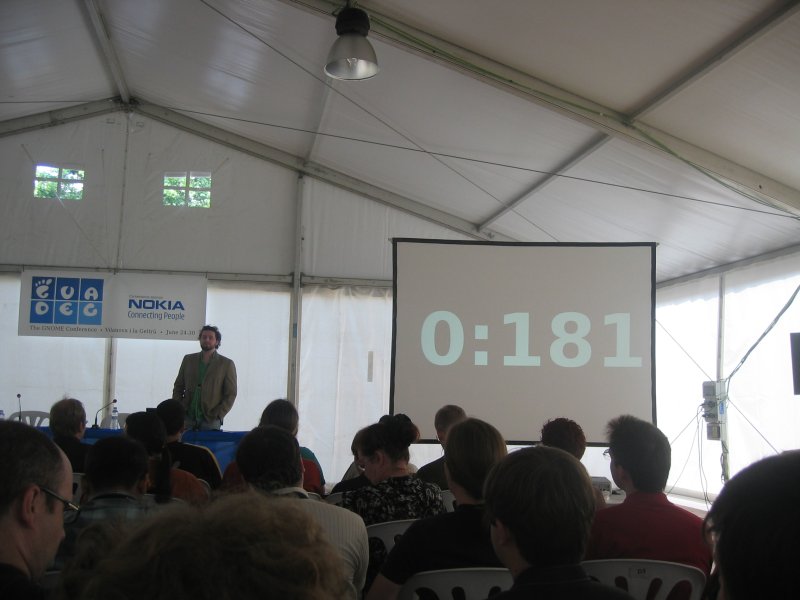I have returned from CaFeConf and Buenos Aires (I will miss the city a lot). The conference is one of the biggest free software events celebrated yearly in Argentina, with about 2000 (yes, two thousand) people registered this year, and about 100 talks, tutorials and workshops -a lot of them in parallel- spread over two days. My two talks went nice.
On Friday after lunch I talked about the Gnome project, during 1 hour, in the main auditorium, with about 150 people in the audience. I presented the history of the project (10 years of Gnome), what is being done today (technologies, applications, organization), and which are the plans for the near future (“Topaz”, world domination, technical priorities, new functionality), but also included some practical aspects about Gnome Love and how people could get involved (including non technical tasks and trying to show that we want diversity). The slides are available for download (in Spanish, with material based on several previous talks about the project and my own talk at aLANtejo 2005); as you can see, I decided to use the great “Gnome is people” picture composition from Luis Villa to close the presentation, and people seemed to like it. I got a bunch of interesting questions about Mono, 3D animations, the relation between Gnome and GNU, and the cooperation between Gnome and Python. And my hope is that someone from the audience decided consider becoming a contributor to Gnome after seeing how nice and cool we are 😉 (according to a fast poll I did, 1/3 of the audience was a Gnome user, and no one was a contributor to the project).
Two hours later, I was talking about Fisterra, a framework strongly based on Gnome technologies which makes life easier for people wanting to use or develop ERP-like free software for business management. This time the presentation took place in a small auditorium, which was full, with about 40 people attending. I talked about the motivation of the project, the architecture, the development process, and even about the business model we propose for it. People showed a lot of interest, asking several questions about functionality, technology and the plans we have for the near future. The slides (also in Spanish, not very technically detailed and quite readable) are available for download.
In the conference I attended to a lot of talks, and had the opportunity to meet very nice people: I had a great time with Dario Rapisardi, from the LinEx project; it was nice to chat with the people from Tecso (main sponsors of the conference), a software development company pretty similar to Igalia in the way they are internally organized; and it was cool to meet Enrique “Gallego” Verdes an Uruguayan free software advocate with Galician roots.
I want to thank the organization, and specifically Martín Brambilla, for the great work they did.



